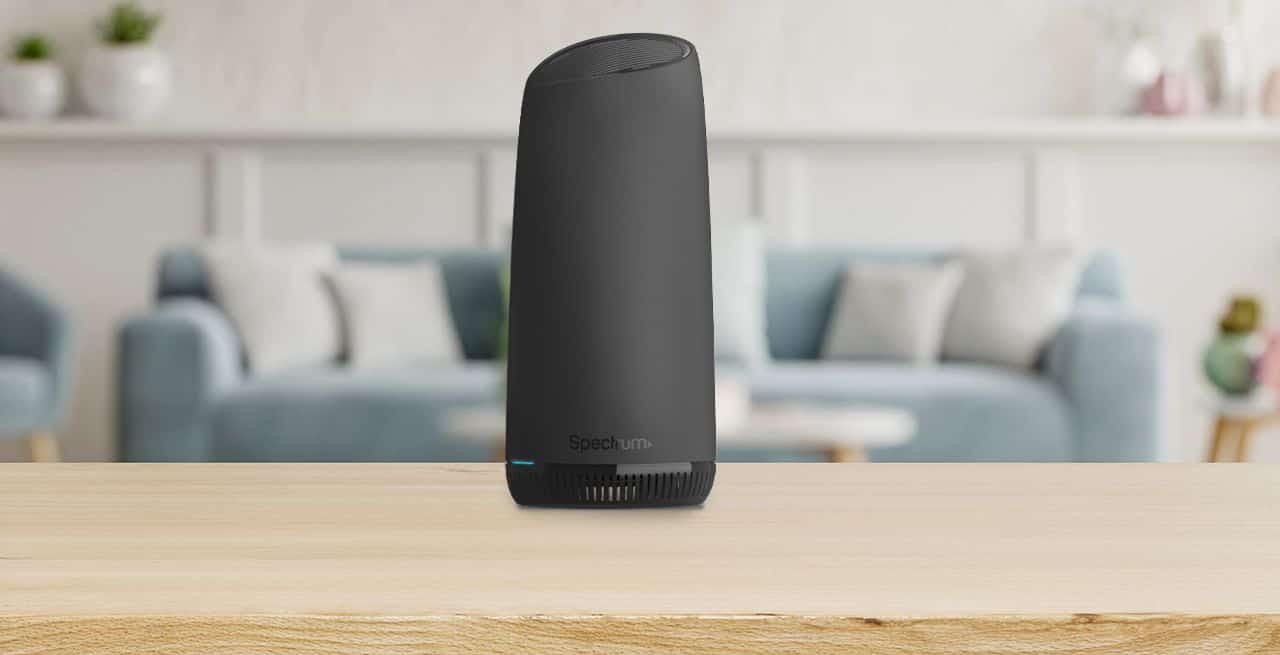Many people wonder if putting aluminum foil behind a Wi-Fi router can make the internet signal stronger. Placing aluminum foil behind your router can help direct the Wi-Fi signal toward certain areas of your home, which may boost coverage where you need it most. The foil acts as a barrier, reflecting the radio waves and shaping the way the signal spreads.
Some try this quick fix to avoid buying new equipment or moving their router. It is a low-cost experiment and does not require much effort. For those who want to know if this hack actually works or if there are better solutions, reading more will help answer these questions.
Putting aluminum foil behind your Wi-Fi router can affect your signal—but it’s not a guaranteed or consistent way to boost performance, and results vary based on your setup. Here’s the science and the reality behind this popular hack.
What Happens When You Put Aluminum Foil Behind a Router?
Aluminum foil acts as a reflective surface for electromagnetic waves, including the radio signals your Wi-Fi router emits. When strategically placed, it can reflect and redirect some of those signals, potentially:
- Concentrating Wi-Fi signals in a desired direction (e.g., toward your living room).
- Reducing signal loss to areas where coverage isn’t needed (like outside your house or into walls).
- Boosting speed or stability in weak-signal zones, in very specific situations.
When It Might Help
- You have a directional need: If your router is near a wall and you’re only trying to boost signal in one direction (like across a room), placing a curved piece of aluminum foil behind it can redirect more of the signal toward where you want it.
- Your router broadcasts in all directions but most of your devices are located in one part of your home.
- You’re experimenting with parabolic reflectors—more refined shapes than just a sheet of foil.
When It Won’t Help (Or Might Hurt)
- Your router is centrally located and you want even signal distribution in all directions.
- The foil blocks signal to areas where you actually need coverage.
- It interferes with the natural omnidirectional broadcast pattern, causing dead zones.
- You expect a massive speed boost—this is not a miracle fix and should be seen as a tweak, not a transformation.
Better Alternatives to Boost Wi-Fi
- Move your router to a central, open location (higher is usually better).
- Upgrade to a mesh Wi-Fi system for larger homes.
- Switch to a dual-band or tri-band router with better range and bandwidth management.
- Use Wi-Fi extenders or powerline adapters in multi-story or signal-challenged spaces.
- Change your router’s channel to avoid congestion from neighbors’ networks.
Verdict
Aluminum foil can slightly improve signal directionality in specific cases, especially if you’re trying to reflect more signal toward one area. But it’s not a professional-grade solution, and often other methods—like repositioning your router or upgrading your hardware—deliver better, more consistent results.
If you’re curious, it’s worth a quick DIY experiment. Just don’t expect magic.
Key Takeaways
- Aluminum foil can help strengthen Wi-Fi in specific areas.
- The foil works by reflecting and redirecting the signal.
- Other methods may give better or more reliable results.
How Aluminum Foil Affects Wi-Fi Router Signal
Aluminum foil can work as a simple reflector for wireless signals. When placed and shaped properly, it may help improve signal strength in some directions, but it does not amplify Wi-Fi power.
The Science of Reflectors and Signal Strength
A Wi-Fi router sends out signals in all directions. Obstacles like walls or furniture often weaken these signals. Aluminum foil acts as a physical reflector. It can bend or direct the wireless signal by bouncing radio waves back into a specific area.
This is because aluminum foil reflects high-frequency radio waves used by most routers. The foil blocks some of the signal in one direction and redirects it in another. This works like a basic parabolic reflector. The simple setup can sometimes improve signal strength in parts of a home where the Wi-Fi is weak.
The method does not add new power to the signal. It only helps guide existing signals. This technique uses the same principle as satellite dishes and some antenna designs.
How to Position Aluminum Foil for Best Results
To use aluminum foil as a reflector, place a curved sheet of foil behind the Wi-Fi router, opposite the area where better coverage is needed. Shaping the foil into a curve or a partial circle is key. A flat sheet will not focus the wireless signals as well.
Position the curved side so that it faces the spot where you want a stronger signal. The shiny side of aluminum foil reflects better and should face the router’s antennas.
Adjusting the angle and curve length affects where the signals go. Small changes can make a noticeable difference. It helps to test the Wi-Fi speed or signal bars on a device as you move the foil to find the best spot. For visual examples and more tips, see this article about positioning aluminum foil behind your router.
Potential Benefits and Limitations
The main benefit is that aluminum foil can boost Wi-Fi signal strength in specific areas by reducing wasted coverage in places you do not need it. This can be helpful in apartments or homes with thick walls or obstacles that block wireless signals.
However, it does not increase the maximum range or internet speed beyond what the router provides. A reflector cannot fix weak routers, slow internet plans, or major interference from other electronics.
Another limitation is that it makes the Wi-Fi more directional. Users in the opposite direction may see worse signal strength. It takes some trial and error to get the best results. While using foil is a low-cost trick, for larger spaces or consistent coverage, adding mesh systems or range extenders may work better than a simple aluminum foil reflector.
Comparing Aluminum Foil Hacks to Other Wi-Fi Signal Solutions
Aluminum foil can help direct Wi-Fi signals, but it is not the only method. Other devices and setup options may offer better results for larger homes or stubborn dead zones.
Wi-Fi Extenders and Other Signal Boosting Devices
Wi-Fi extenders connect to the main router and send the internet signal farther into a building. Many people use these devices to improve coverage in bigger houses or areas with thick walls. Some of the best Wi-Fi extenders can make a big difference if signal strength drops in certain rooms.
These units are easy to set up in minutes. Most extenders use a wall plug and do not require technical skills. They are sometimes called repeaters or boosters, but all work to spread the Wi-Fi coverage.
Mesh networks are another option. They use several nodes throughout the home, passing internet packets from one node to the next. This approach can reduce dead spots even more than single-point extenders.
Cable Modems, 3D Printed Solutions, and Custom Reflectors
Upgrading cable modems can speed up internet access, especially if the current one is old or not matched with the ISP’s speed. Sometimes, a new modem gives more reliable connections and helps computers get the best possible internet access.
Custom reflectors, including 3D printed options, can also help. People have used a curved sheet of aluminum foil behind their routers to focus signals in a specific direction. 3D printers make it easy to create personalized reflectors if a simple foil sheet is not enough.
These DIY methods are often low-cost. However, their effect is usually small compared to buying a new router or adding professional equipment.
Other Factors Affecting Internet Access
Many other factors can slow down Wi-Fi signals, such as walls, floors, and the type of router used. Even the number of devices sharing the same Wi-Fi can affect speed and reliability. Routers placed behind large furniture or too close to electronics can lose signal power.
IP address conflicts, software updates, and background tasks running on multiple computers may also lower speeds. Keeping routers out in the open and clear of clutter helps their signals move freely. Checking cable modems once a year ensures they work with the current speed plan from the internet service provider.
Frequently Asked Questions
Placing aluminum foil near a Wi-Fi router can affect how signals move in a room. Using household materials for network improvement can be quick, but the results may vary based on placement and design.
Is it safe to place aluminum foil around a Wi-Fi router to enhance signal strength?
Aluminum foil does not cause major safety concerns when placed around a router. The foil can reflect radio waves but does not pose a fire risk or electrical hazard when used properly and not inside the device.
Will wrapping a router in aluminum foil interfere with its overall performance?
Completely wrapping a router in foil blocks the signal instead of boosting it. The foil should be behind or beside the unit, not around or covering any vents or hardware. Incorrect placement can weaken the connection or overheat the router.
How can aluminum foil be used to improve home Wi-Fi network coverage?
A sheet of aluminum foil can be placed behind a router to shape and direct the flow of Wi-Fi signals. Bending the foil in a curved shape can help focus the signal toward a specific area, which may help boost coverage in that direction. More details can be found at using aluminum foil with routers.
What materials are effective for boosting Wi-Fi signals at home?
Reflective materials like aluminum foil can guide Wi-Fi signals but do not create a stronger signal. Placing the router in an open space, away from thick walls and metal objects, can also help. Newer routers and mesh systems are more reliable for wide coverage.
Are there any proven DIY methods for increasing Wi-Fi signal reliability?
DIY tricks include using curved aluminum foil behind the router to focus wireless signals. Raising the router to a higher spot or moving it away from other electronics can also improve reliability in many homes.
What considerations should be taken into account when using a Wi-Fi extender?
Placement matters. The extender should be close enough to the main router to catch a strong signal, but far enough to spread coverage to weak areas. Avoid placing extenders near metal objects or thick walls to reduce interference. Always follow the setup instructions from the manufacturer.







